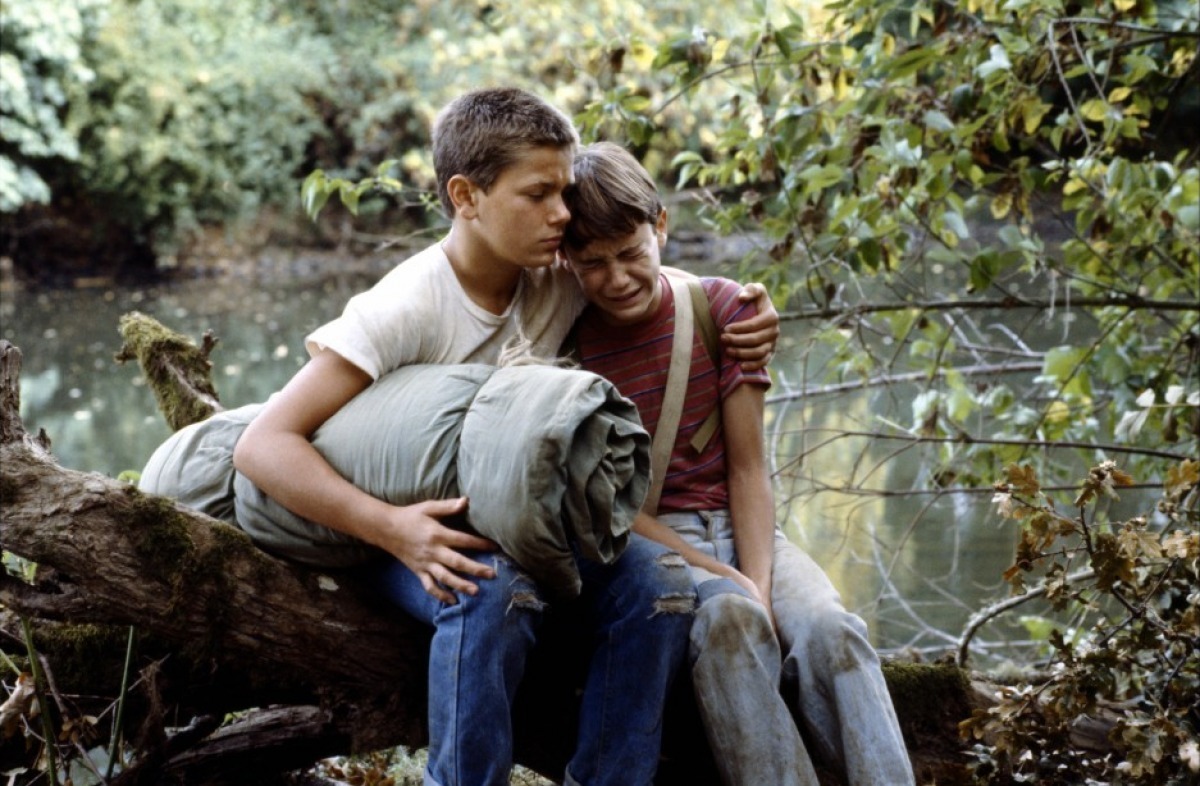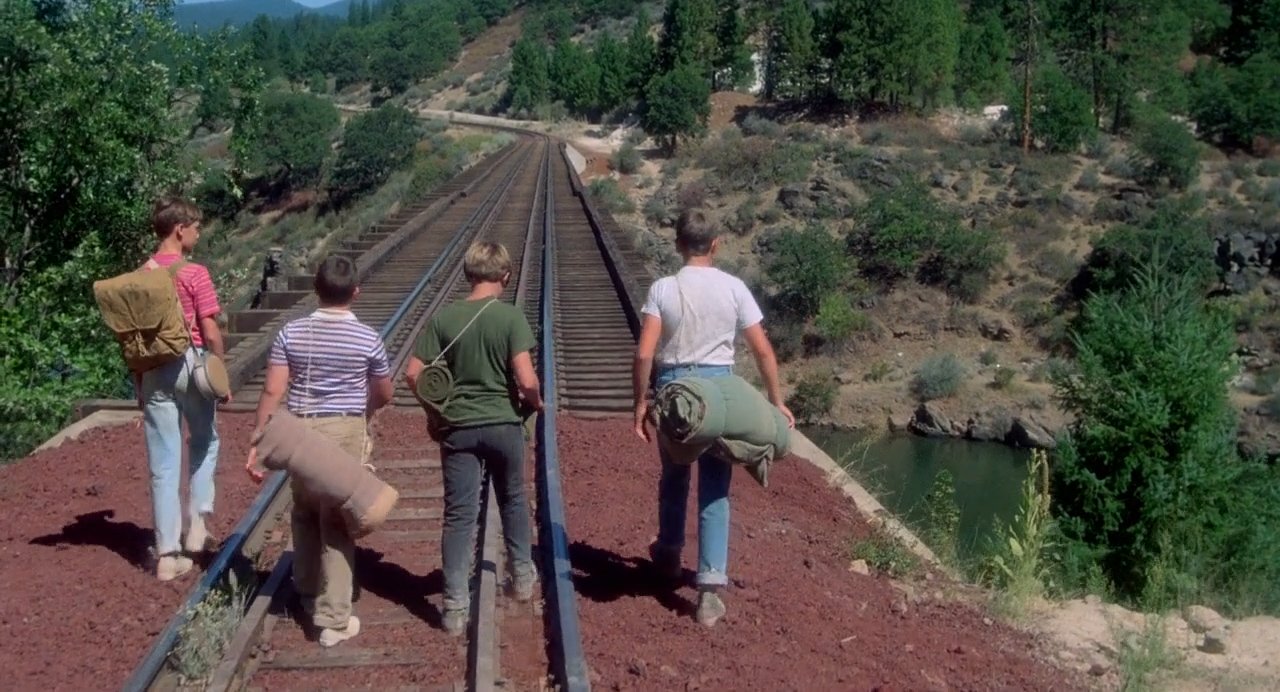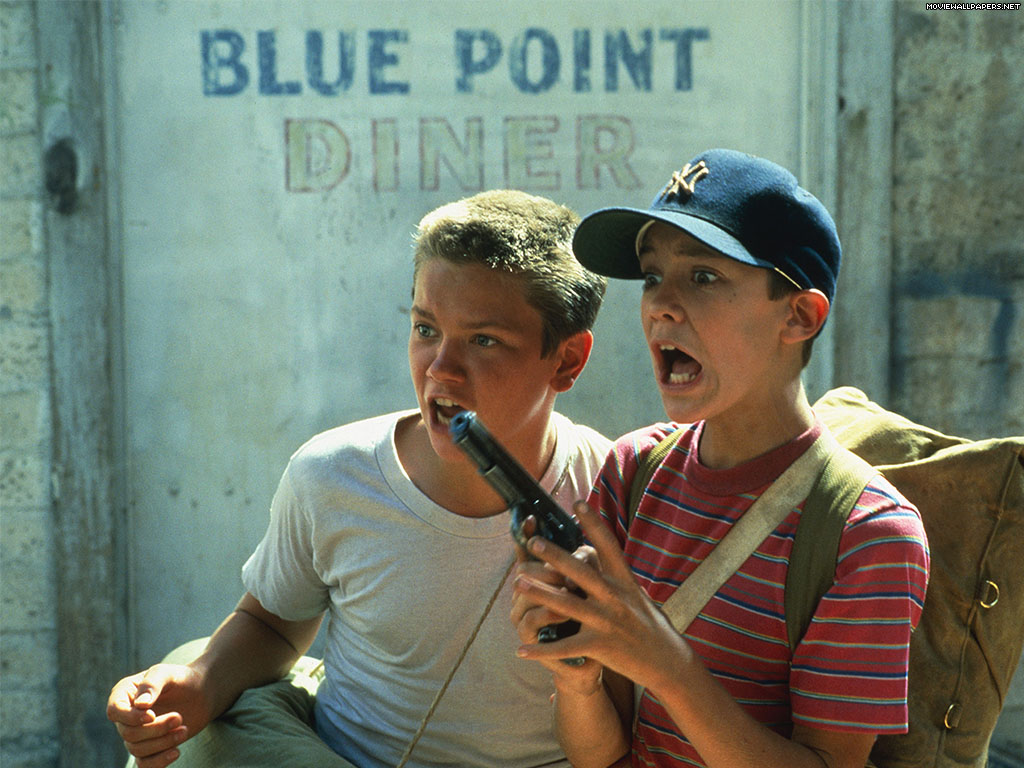
“You guys wanna see a dead body?”
– Vern Tessio (played by Jerry O’Connell)
When the night has come
A contemplative and considerate rendering of susceptible youth as well as male identity, very little in Rob Reiner’s two previous films –– the hilarious and inspired mockumentary This is Spinal Tap (1984), and the silly roadmovie The Sure Thing (1985) –– seemed to anticipate the bittersweet nostalgia he so elegantly detailed and generously displayed in 1986’s venerated adolescent adventure, Stand By Me.
Set in Castle Rock, Oregon, over the Labor Day weekend of 1959, Stand By Me is a tale of meaningful and animated friendships amongst young boys, shrewdly and divinely adapted from Stephen King’s semi-autobiographical 1982 novella “The Body.” Easily one of the best non-horror adaptations of King’s work (alongside Frank Darabont’s The Shawshank Redemption [1994]), Reiner’s film is a superb balance between quotable, rambunctious comedy and exceptional, ardent drama.
“”I thought [Stand By Me] was true to the book… it had the emotional gradient of the story. It was moving. [Rob Reiner] showed it to me in the screening room at the Beverly Hills Hotel. … And you have to remember that the movie was made on a shoestring. It was supposed to be one of those things that opened in six theaters and then maybe disappeared. And instead it went viral. When the movie was over, I hugged him because I was moved to tears, because it was so autobiographical.”
– Stephen King
Childhood’s end

For the four boys who populate Stand By Me, the summer of 1959 is enjoyably idle, at least, it is on the surface when we first are introduced to contemplative, and intellective Gordie Lachance (Wil Wheaton), daring and disquieted Teddy Duchamp (Corey Feldman), chubby, sweet-natured sycophant Vern Tessio (Jerry O’Connell), and gregarious group leader Chris Chambers (River Phoenix).
On the surface these boys seem to have nothing but lack of reserve, plenty of rope, and abundant privilege. But such notions are an oversimplification, particularly when it becomes apparent that Chris, Teddy, and Vern are largely neglected or outrightly abused by either their volatile parents or bullying older siblings, and Gordie, the primary protagonist, is struggling to come to terms with the recent death of his older brother, Denny (John Cusack), he also bears brutal witness to how this loss is fracturing the lives of his grief-stricken parents.
And so the endless seeming days of the boys’ bucolic summer deepen, and then one morning, as they pass the time in their treehouse, when Vern suddenly pipes up that he overheard his miscreant brother, Billy (Casey Siemaszko) having a gob session with his hoodlum bestie, “Eyeball” Chambers (Bradley Gregg) about the whereabouts of a dead body––that of a 12-year-old boy who’d been missing for a few days. Excited and intrigued to see what a corpse looks like, and with the notion that they could become local heroes for making such a discovery, the quartet set off to find the body.
“River Phoenix was like, you know, he was a young James Dean and I had never seen anybody like this.”
– Rob Reiner
What makes us ready?

The impressive performances from the young boys, particularly from Phoenix, certainly helps to make Stand By Me the affectionate, occasionally frightening, but consistently high-minded and ruminative youth-framed treasure it’s considered to be today. When it was first released it was a modestly budgeted sleeper, and while it oozed potential and promise, few predicted it would have the resonance and sustain it has since acquired.
Screenwriters Bruce A.Evans and Raymond Gideon were very truthful to King’s story of friendship and aching bereavement. Sure, the locale is moved from Maine to Oregon, and some of the fates of the characters are a little more ambiguous and upbeat (the novella is certainly touched by more tragedy), but the genius and gist remains.
Stand By Me accurately, efficiently, and with grace depicts the beliefs (“I’m in the prime of my youth, and I’ll only be young once!”), discussions (“Mickey is a mouse, Donald is a duck, Pluto is a dog. What’s Goofy?”), fears (“I’m no good. My dad said it, I’m no good.”), games (“Two for flinching!”), insecurities (“No, seriously, do you think I’m weird?”), and secrets (“Annette’s tits are great!”), that young boys share.
And these youthful convictions are contrasted sharply by Kiefer Sutherland’s older, more cynical, and much more malicious John “Ace” Merrill. It’s Ace who offers up a bitter taste of what could very well be just around the bend for Gordie and the boys if they aren’t too wise or lose their way.
Agile, amicable, and at times achingly poetic and wide-eyed, it’s no wonder that Stand By Me has, over the years, accrued such a venerated place in the hearts of so many. It’s a treasure of intriguing, satisfying, and understandable agonies of being brave and being young.
“Stand by Me, it sort of talks about this time in your life that feels incredibly complicated, but as you get older you realize it’s actually incredibly simple and we get the tremendous gift of not knowing that it’s never going to be like that again for the rest of our lives, so it’s just pure and it’s uncomplicated. And it’s a time that stays with us even as we become adults.”
– Wil Wheaton
Author Bio: Shane Scott-Travis is a film critic, screenwriter, comic book author/illustrator and cineaste. Currently residing in Vancouver, Canada, Shane can often be found at the cinema, the dog park, or off in a corner someplace, paraphrasing Groucho Marx. Follow Shane on Twitter @ShaneScottravis.